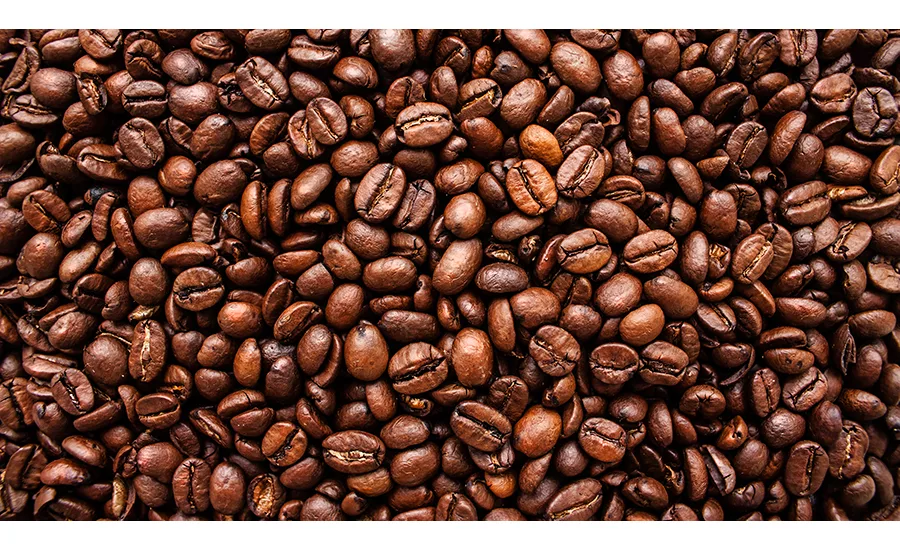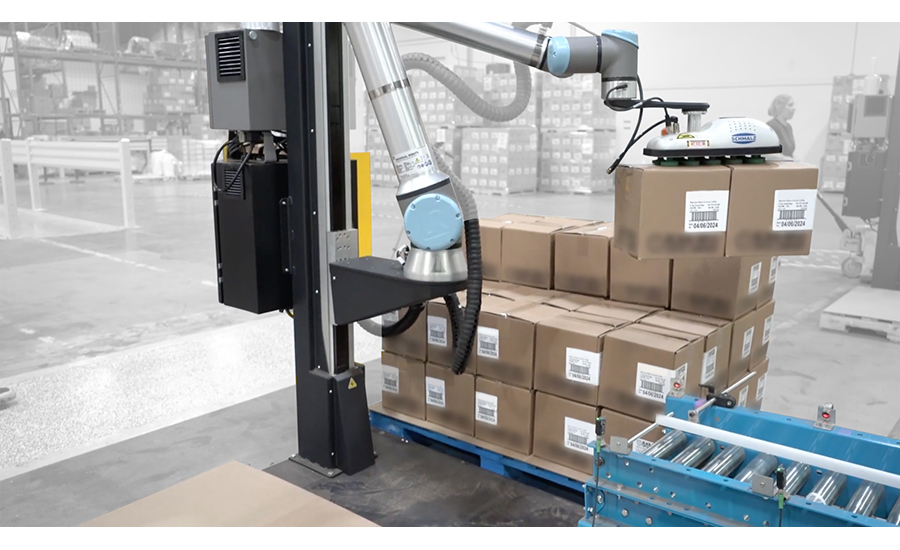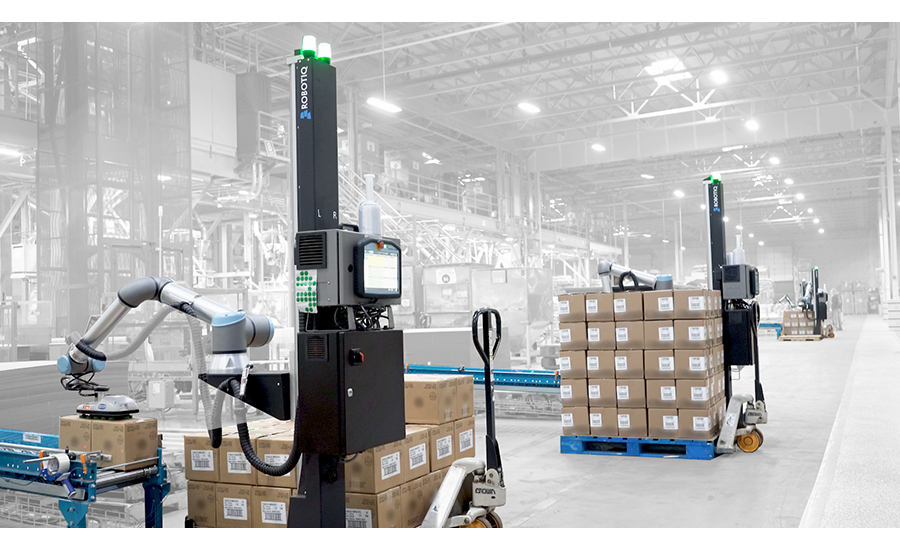Case Study
Cascade Coffee Ramps Cobot Palletizing Operations
Co-manufacturer Cascade Coffee adds automation to its secondary packaging operations by adding six cobot palletizing units.

Image courtesy of Getty Images / Watson_images
In 2019, Tyson Foods’ CEO shocked the food industry by announcing an investment of $1.3 billion in automation. Tyson Foods created an automation research and development (R&D) group in 2019, and many analysts pointed to advanced robotics as an essential way to address workforce turnover rates in operations. For example, Georgia Tech’s Research Institute (GTRI) began the development of an advanced robotic and gripper prototype to debone chicken in 2012.
Currently, food manufacturers are quite successful in finding automation solutions to address high-turnover food operation positions, such as end-of-line palletizing roles. Compared to ten years ago, automation technology price points have dropped significantly for a range of applications: sensing, pick-and-place case packing or cobot palletizing. Moreover, increased automation expenditures can achieve a quick return-on-investment (ROI).
“The early approach to automation for food businesses was all-or-nothing [for packaging lines],” said Joe Campbell, senior manager of applications development and strategic marketing at Universal Robots in 2023. “Moreover, the interesting thing is if you watch the food segment, we've all been aware that labor's going to be an issue.”
Seattle-based Cascade Coffee, a 40-year-old contract coffee roasting and packaging company, was experiencing heavy turnover issues with its end-of-line palletizing position—called an end-line position. The manual approach was causing bottlenecks with production. “The simple manual processes [of stacking cases] were consuming just an immense amount of time to where machines would stop because operators actually couldn't palletize fast enough,” says Ron Kane, COO at Cascade Coffee.
Besides production volume, retraining was becoming an issue with such a high turnover rate at the position. “We've had a turnover rate in excess of 60% for those operators, and we had to train every single one of those operators almost every week,” says Kane. “So, we would have a new Sally or Joe on Monday and they'd be gone the next week, but we still had to train them on the pallet configurations.”
At this facility, Cascade Coffee packages single-serve K cups and 12- and 20-oz. bags, along with 2-lb. bags, and distributes these products worldwide via a network of coffee partners. This growing operation has more than 400 stock keeping units (SKUs) and, on the distribution side, a dozen of pallet configurations.
After investigating automated palletizing solutions, Cascade Coffee decided to go with a Robotiq cobot solution. The Levis, Quebec-based company offers cobot technology solutions to automate end-of-line palletizing and other applications. Robotiq has a network of more than 200 partners that deliver timely installations and, in this application, used Olympus Controls to integrate the Cascade Coffee solution.
In total, Cascade added six cobot units for its large coffee co-packing operation and used Universal Robot’s UR10e model and Schmalz’s vacuum grippers for grabbing cases and placing them on the pallet.

Cascade Coffee Considerations—Robot versus Cobot
With experienced managers in place, Cascade Coffee knew a flexible palletizing solution would be a good fit for its contract business model, and this meant cobot technology. “In my previous work, we had large industrial robots and the kinds behind the safety cages,” says Kane. “A lot of the challenges were the amount of time it took them to get installed and programmed, and then the specialty work that needed to be done by the integrators that you couldn't do at a factory level.”
However, Cascade Coffee wasn't about to sacrifice features and productivity. This cobot solution allows for coordinated motion of the 7th axis, producing a quick pallet load due to the cobot not stopping and raising the next height to continue. “The palletizing solution can stack to a pretty high pallet level, especially when you think of Japan, and how our products are on a container ship, so you have to cube out for expense,” says Dennis Stickles, director of engineering and IT at Cascade Coffee.
“This coordinated motion [at Cascade Coffee] allows us to pick and place these boxes more efficiently and in a smooth motion,” says Kendra Patton, palletizing sales expert at Robotiq, during a recent webinar. “We're owning all of these trajectories and allowing the life of the robot to be better due to Robotiq’s programming.”
In contrast, an industrial robot doesn’t offer quick changeovers with pallet patterns due to the need for outside programming. Robotiq’s robust and operator-accessible programming allows Cascade Coffee to switch palletizing patterns depending on new orders, changeovers or clients.

Visualizing Cobots in Action
For this application, Cascade Coffee relied on Olympus Controls and Robotiq coaches to integrate the initial cobot palletizing line. This first phase of the integration included using the Robotiq Simulation tool to create the palletizing design: input case information, pallet data, how to build and the pallet pattern.
Cascade Coffee also wanted higher payload weights and opted for multi-case picking with the initial line. The simulation tool helped Cascade Coffee visualize a multi-picking operation and run a demonstration via the software. According to Robotiq, Universal Robot’s 10e cobot can support a payload of up to 40 lbs.
“We put that first line in very quickly because Dennis [Cascade Coffee’s director of engineering and IT] was confident he would be able to deal with the software. All this is thanks to the quality of the Robotiq coach, who was able to show him exactly how to do it,” says Kane.
The Future is Now
;Many in the food manufacturing segment are making urgent capital investments due to production volume and modernization, while ROI has been diminished in some buying decisions. “For our trial cobot, the ROI was about 13 months based on the amount of runtime,” says Kane. “Then we bought the next five, and that ROI for the total package was less than 11 months based on our runtime. So, we'll have all of these robots completely justified and paid for in about three months.”

Cascade Coffee is also happy with the production volume increases. The co-packer’s “slowest” line palletizes 2,500 cases in a day, and its fastest 6,500. Also, plans are in place for a line that will palletize 7,500 cases a day.
For the workforce, the implications are huge. With automation in place, employees are taking on higher-level job responsibilities. The end liner position was one of the lower-paid positions with Cascade Coffee. “Since we installed the Robotiq solution, Gloria—a past end liner—has learned how to run the midline with the filler, so she's got a more technical job set now,” says Kane. “She's also been able to increase her wages because she has a more technical position.”
Looking for a reprint of this article?
From high-res PDFs to custom plaques, order your copy today!







